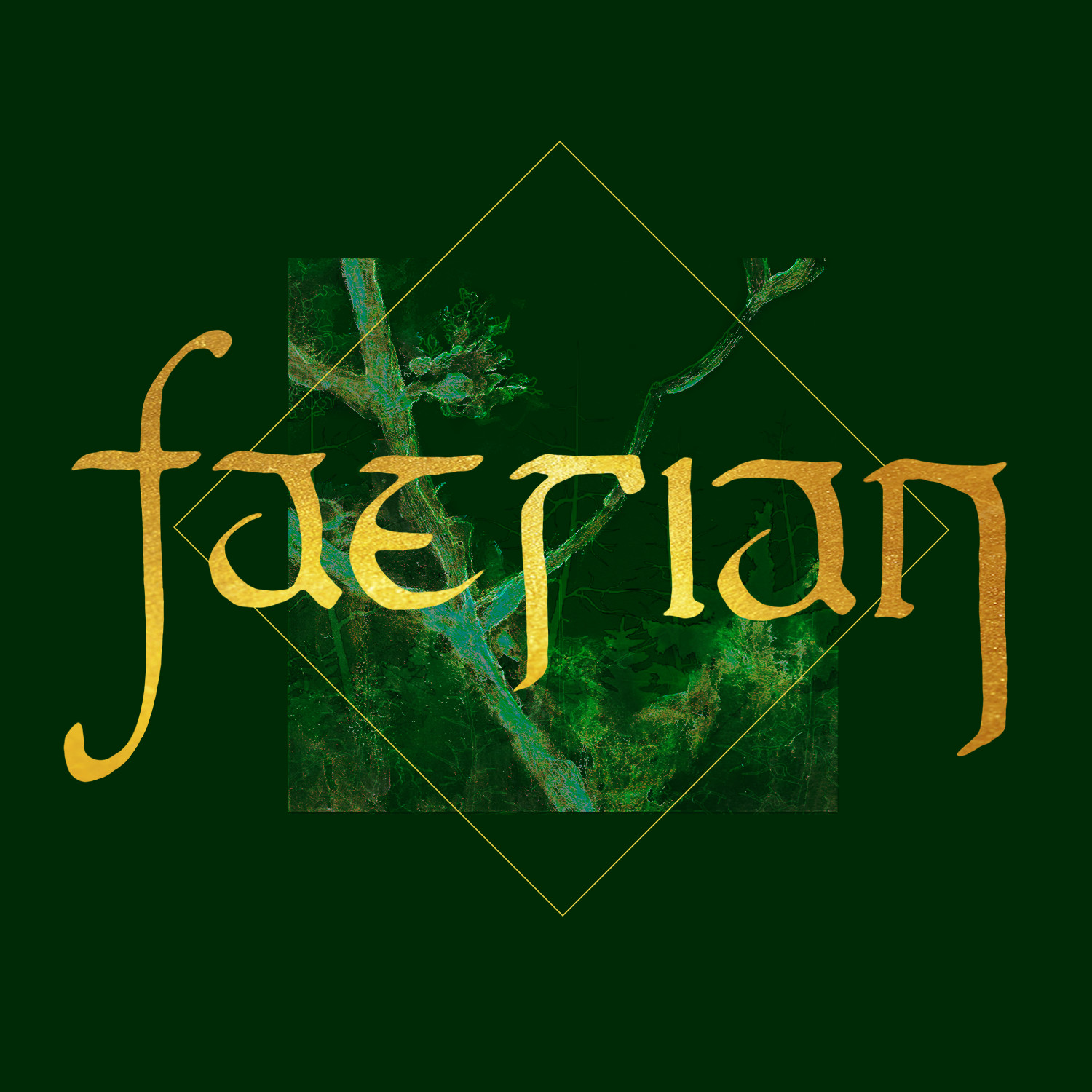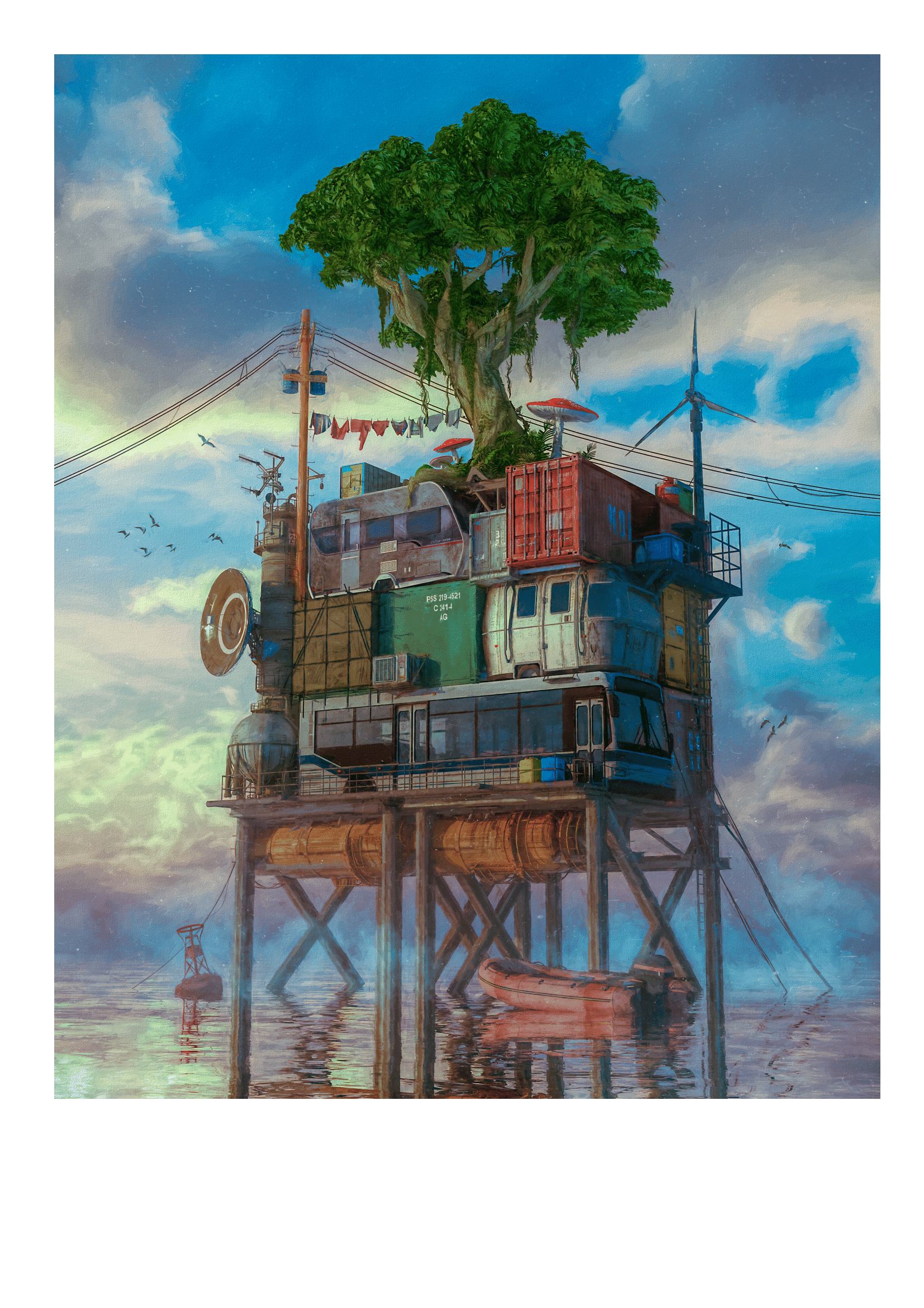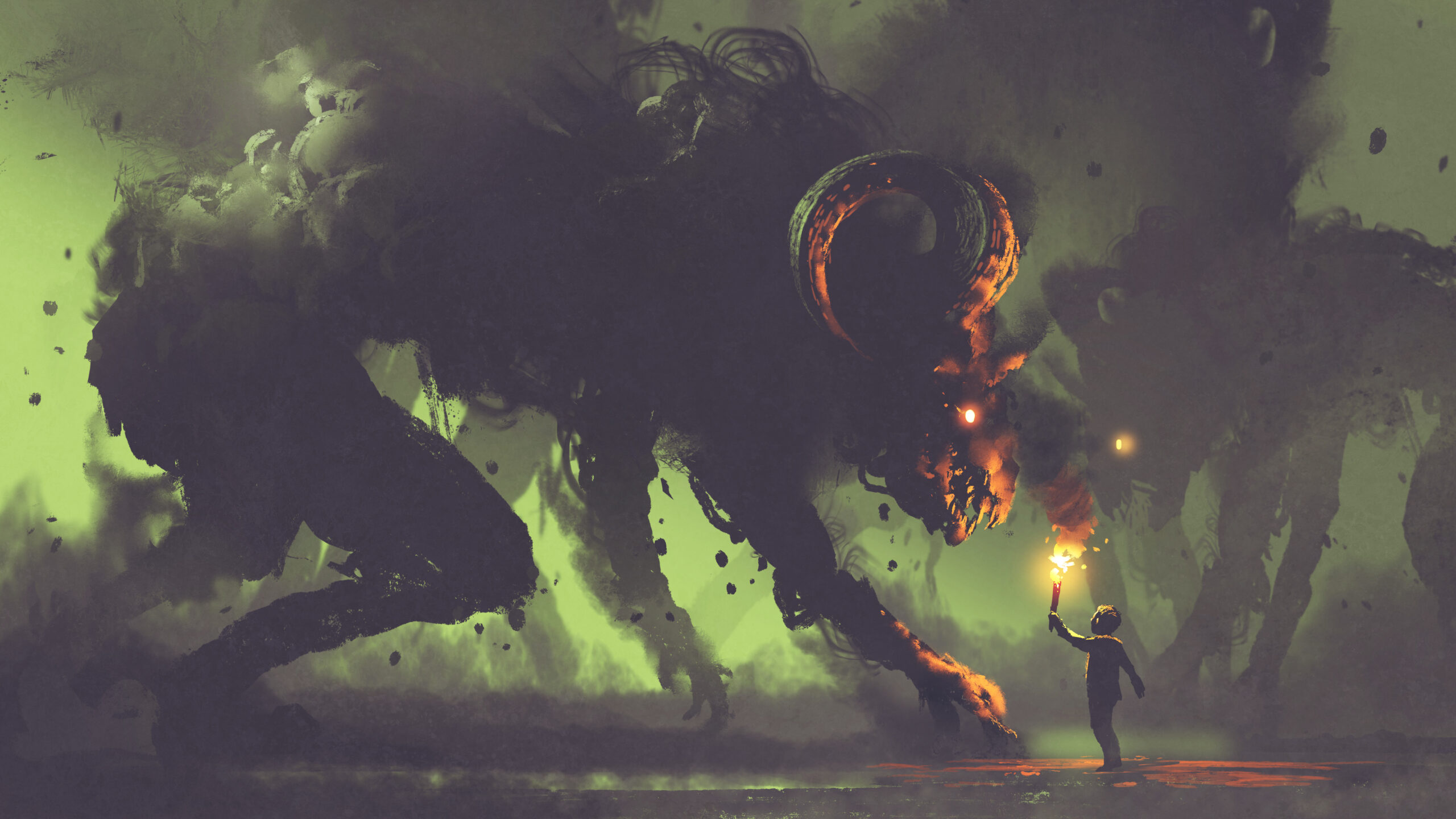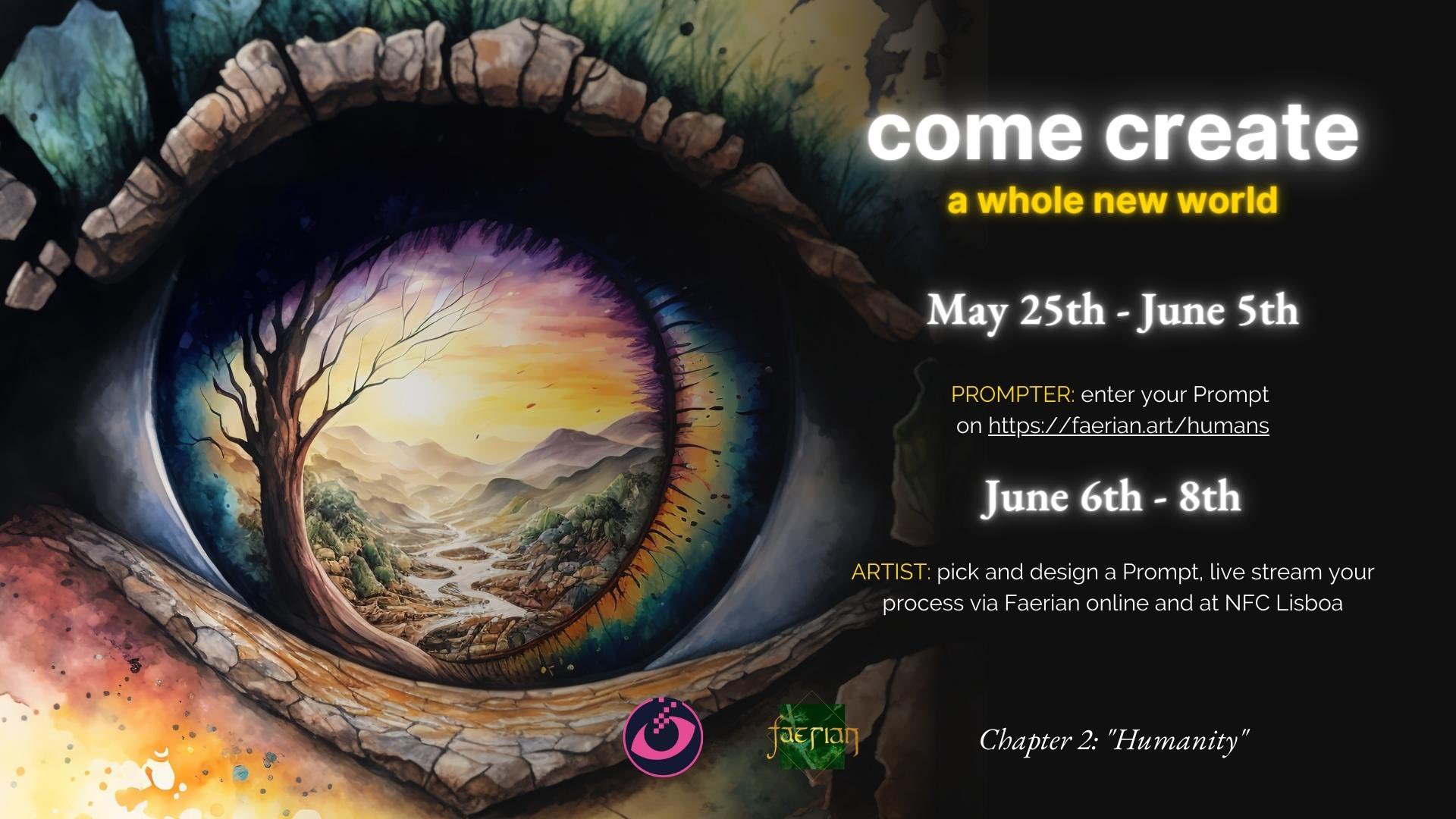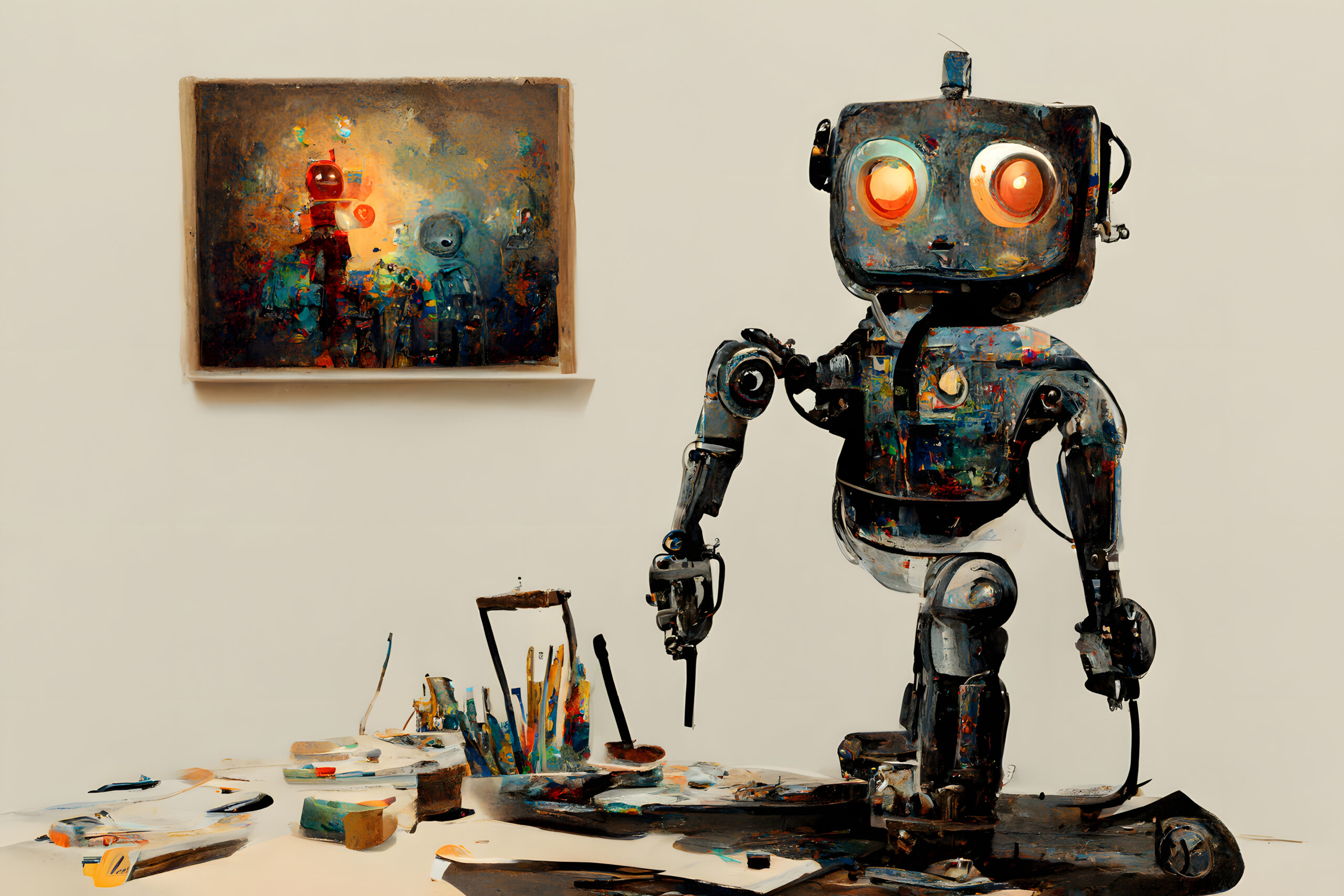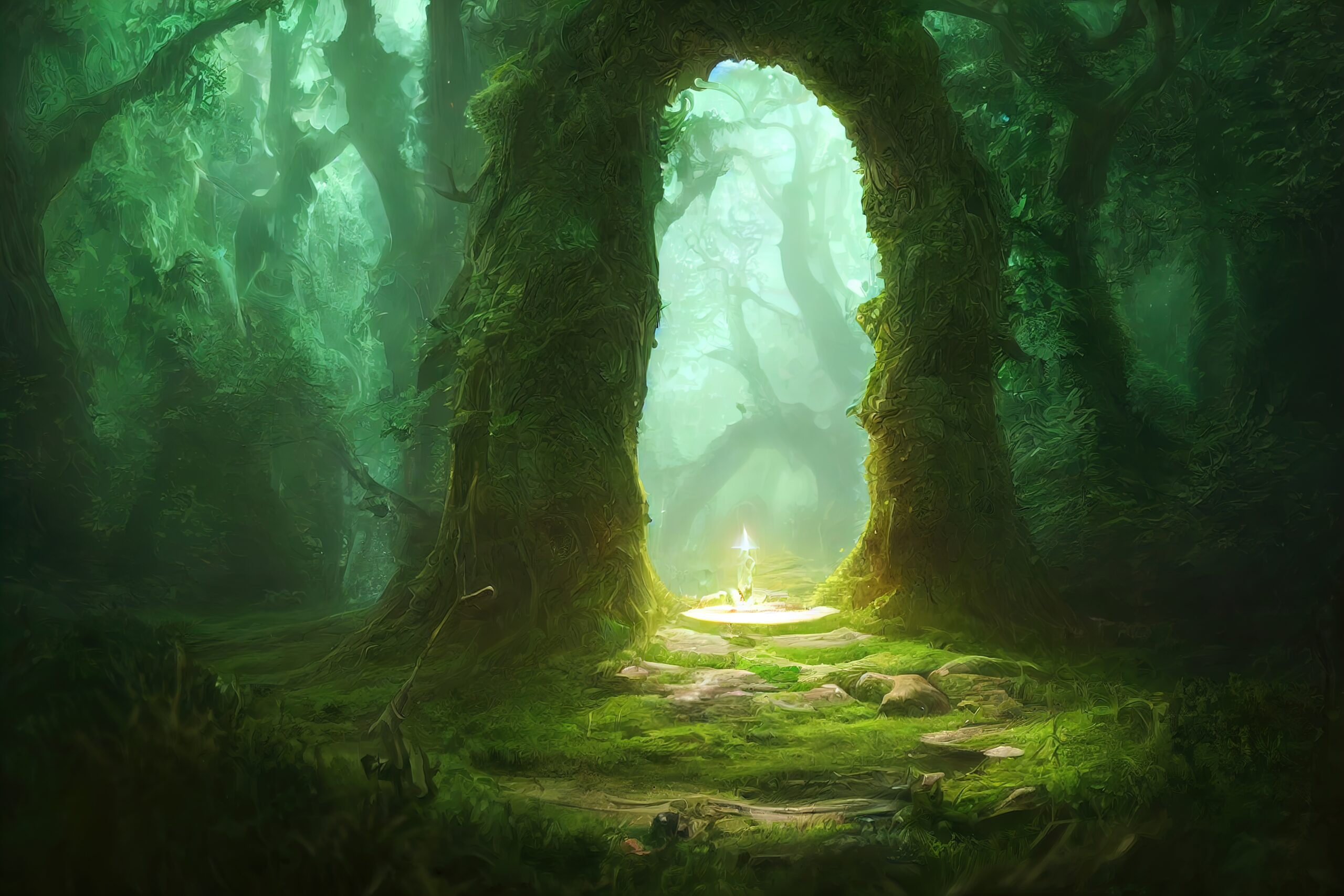
Welcome to the World of Fantasy Art
Summary: Fantasy art has always been an important part of our cultures. We briefly retrace its evolution.
Article available on Medium
“These are images to get lost in. To contemplate and speculate about. Malleable and ever-changing, like shape-shifting clouds in alien sky. Images to dream by.”
Guillermo Del Toro, White Cloud World Vol 1
The fantastic was always here
The fantastic has been part of human cultures for as long as we recount our histories. Magical and heroic, dark and frightening has never stopped intriguing us. Visual culture around the world made myth, legend, and imagination alive in the most extraordinary ways. Walking hand in hand with folklore, literature, and storytelling, where it was born and celebrated, depictions of the fantastic are a window into worlds other than our own, illuminating our fears and desires through the marvelous, impossible, and uncanny.
J. R. R. Tolkien called fantasy the art of the “arrestingly strange”. Rather than completely removing us from all reality, fantasy merges that which is impossible and that which is real. Dostoevsky wrote: “The fantastic must be so close to the real that you almost have to believe in it”.
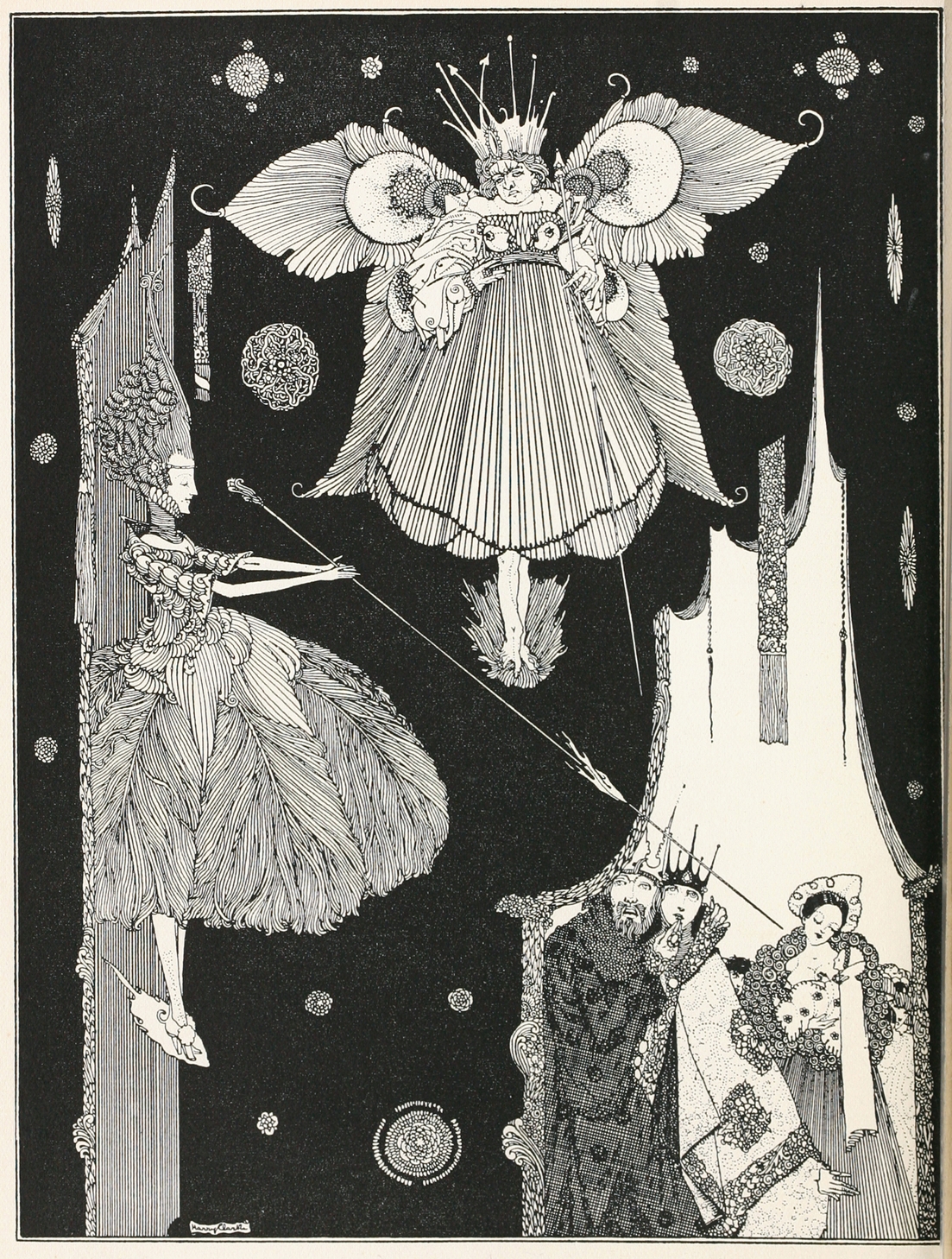
Artwork from Henry Patrick Clarke (1992):
“At this very instant the young fairy came out from behind the hangings”
Is fantasy art still a thing nowadays? More than ever.
Fantasy Art, or a “marvel of world art history”
In 2020 art publisher Taschen gave us the first Fantasy art anthology Masterpieces of Fantasy Art proclaiming that this art genre can no longer be put aside as lowly craft, that it proudly stands as one of the marvels of world art history. The past 50 years have turned the tides on highbrow and lowbrow, rising the visual to an epitome of our age. Frank Frazetta’s “Egyptian Queen” fantasy piece painted for Eerie magazine was sold at $5.4 million in 2019!
On top of traditional art, digital technologies brought unprecedented opportunities for artists to engage with fantasy and raise appreciation of the fantastic universes in many different fields. In 2021, following his $6 million sale of his “Ocean Front” NFT (Non-Fungible Token), American artist Mike Winkelmann a.k.a. Beeple, made history with $69 million Christie’s auction sale of the “Everydays: The First 5000 Days” fantasy filled collage work, said “we are witnessing the beginning of the next chapter in art history, in digital art”.
NFT Artwork from Beeple: “Ocean Front”, sold at $6 million in 2021
The future looks more than bright for fantasy art. But what is it exactly?
All that Fantasy Art Entails and More
There is no consensus on what should be included or excluded from the rich world of fantasy and the fantastic. This is why the author of The Encyclopaedia of Fantasy, John Clute believes it should be defined through exploration – that “fantasy is a way to tell stories about the fantastic”.
Today the fantastic encompasses historical worlds of imagination, of epic quests, fairies, elves and dragons, sword and sorcery. Stories of myths and mysticism, folk and fairy tales, dreams and visions, strange and other worlds. It is inspired by imaginary universes of literary giants, by folklore and legends throughout history and around the world, by romance, bravery and power. Fantasy is closely connected and often entangled with genres of science fiction and horror, sharing with them the love of subversion of truth and reality.
Fantasy art can include any medium in which a fantastic story can be told, but its main form is the visual image, defined as a moment taken from a story.
Aside of providing escape, these improbable worlds open us up to different perspectives about our societies and ourselves, constantly negotiating boundaries between what is and what could be.
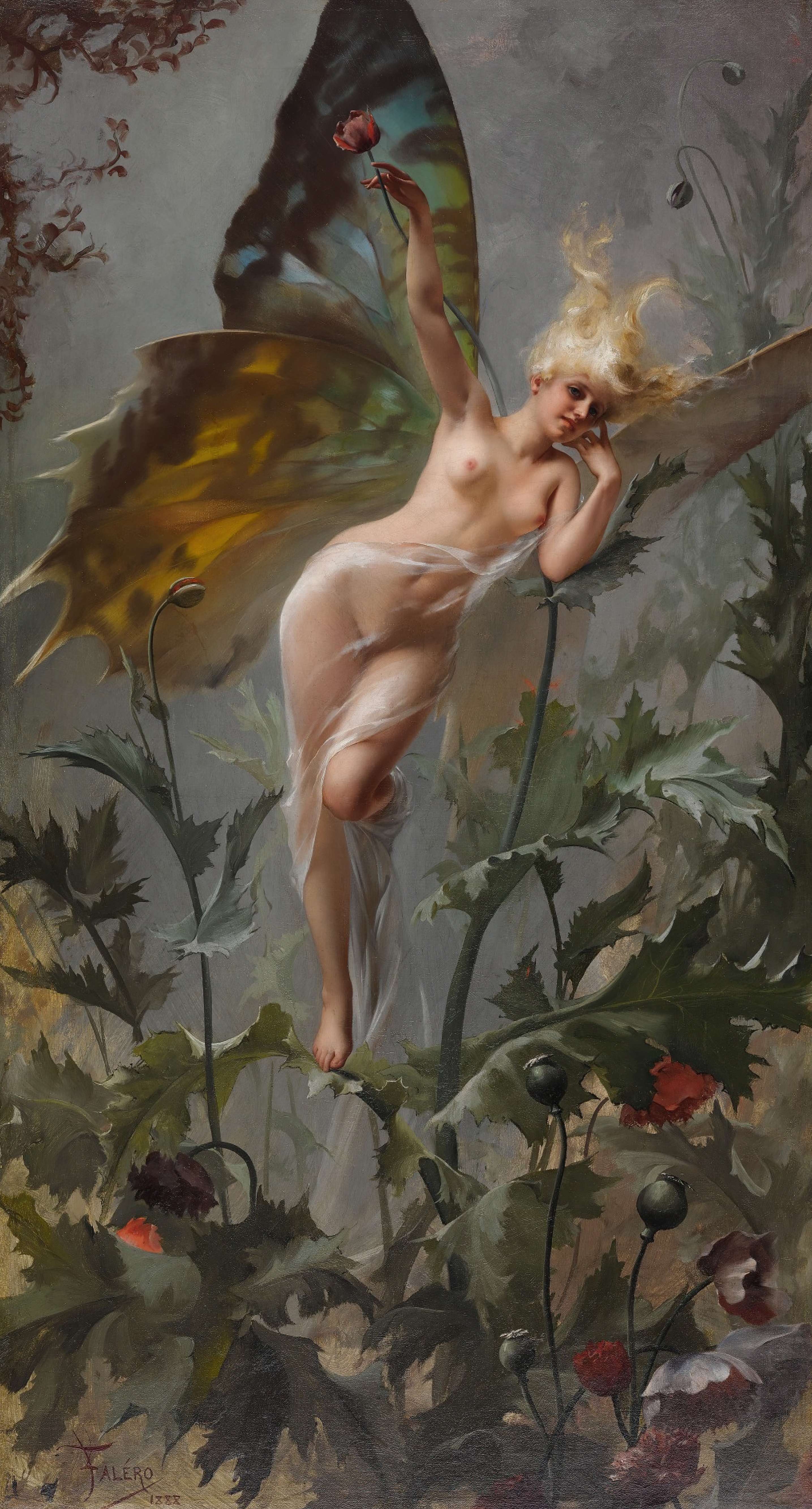
Artwork from Luis Ricardo Falero (1888): “The Poppy Fairy”
From Cave Paintings to AI
Yes, you read the title correctly. Fantasy has been the subject of art history all the way back from the cave paintings of mythical creatures of our early ancestors! It was an important element in religious art of the Middle Ages and continues to have a hold on artists until today.
Illustration Art arrived in the early 20th century, it is the foundation upon which contemporary fantasy art lies. For example, the pioneer works of Henry Justice Ford and his Lang’s Fairy Tales illustrations and Henry Patrick Clarke who provided artistic accompaniments to classical works by Hans Christian Andersen (the author of the Little Mermaid) and Edgar Allan Poe.
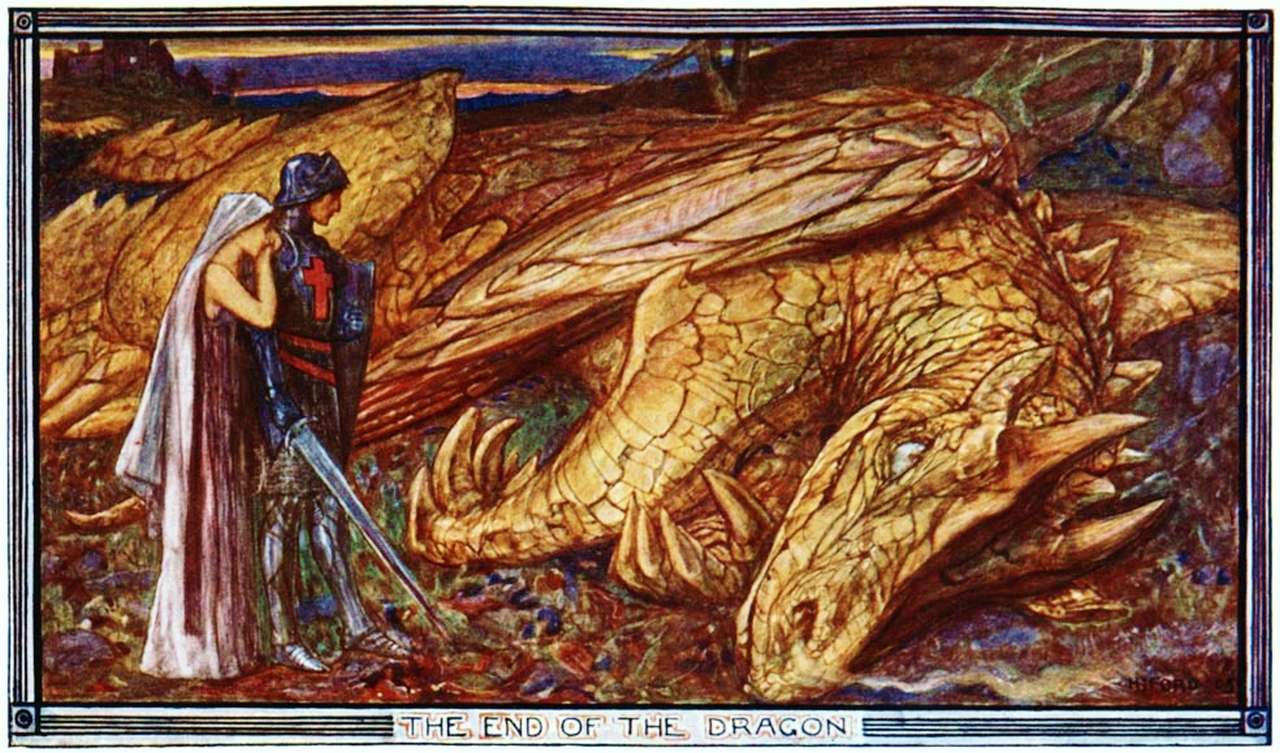
Artwork from Henry Justice Ford (1905): “The End of the Dragon”
Above illustrating fairy tales, Illustration Art reached its heights with works of John Howe – the famed illustrator of Tolkien’s Lord of the Rings, Frank Frazetta and Michael Whelan. If you still doubt about the inspirational power of illustrations, John Howe’s work was so exceptional that Terri Gilliam called him an “ancient pagan returned to live among us”, a “wizard from the North West” who succeeded in making him believe “there are still heroes and great deeds to perform”.
In our century, Fine and Digital Art remains the most creative field of Fantasy Art, one of unrestrained and unguided imagination. While artists are producing truly incredible works working in traditional techniques and winning admiration and respect of the wider art community, the sphere where fantasy art truly found its home and bright future is the digital.
Development of digital technology brought many sophisticated tools for artists to create fantastic imagery and the field recently grew to include AI-generated works. Greg Rutkowski, digital artist and illustrator from Poland was irritated to learn that his name was used more than 90,000 times in only a month since Stable Diffusion AI art generator was launched in August 2022 where internet users (or “AI artists”) have been producing striking fantasy digital artworks by the way of simple text prompt in which they invoke Greg’s name.
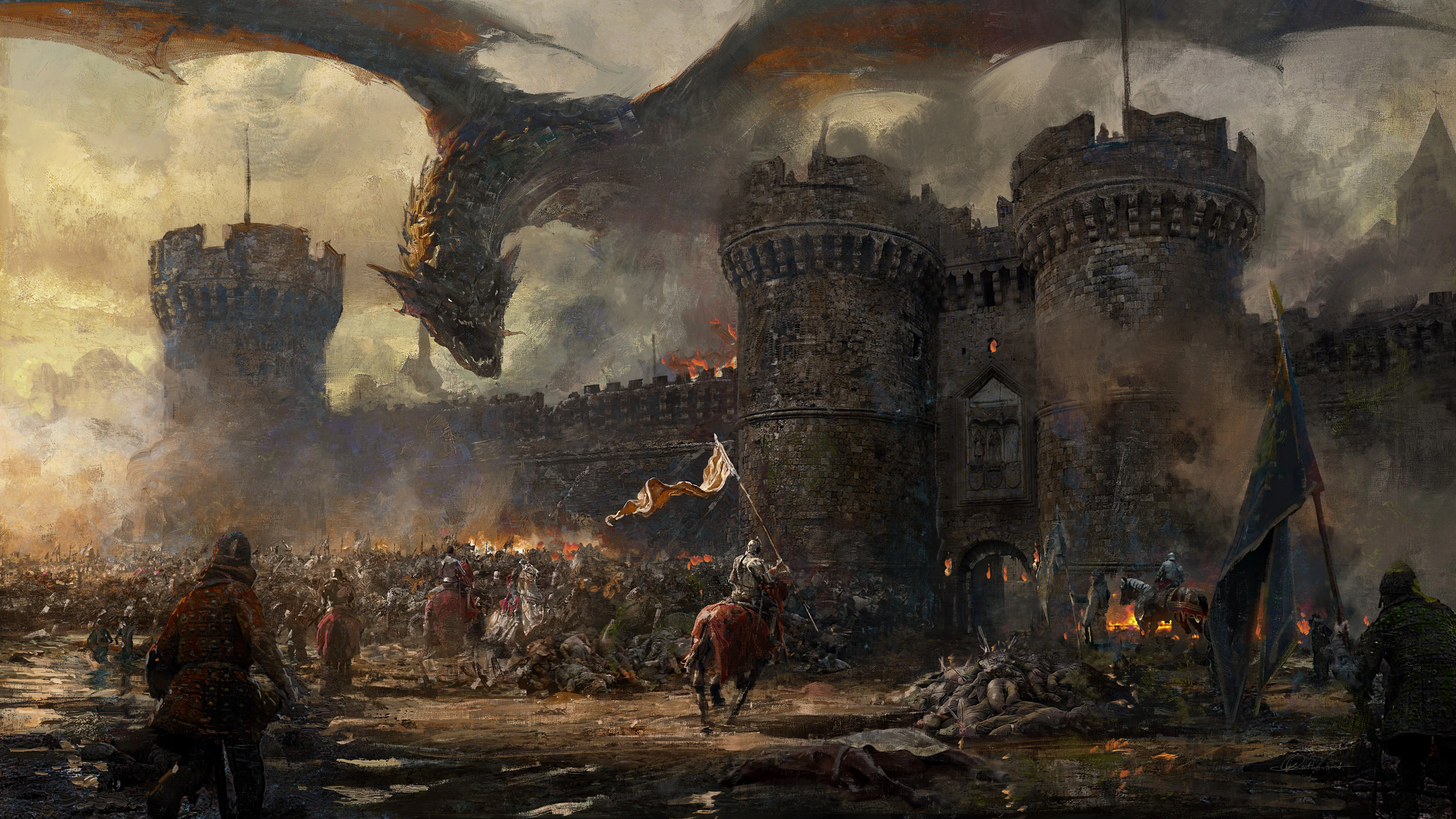
versus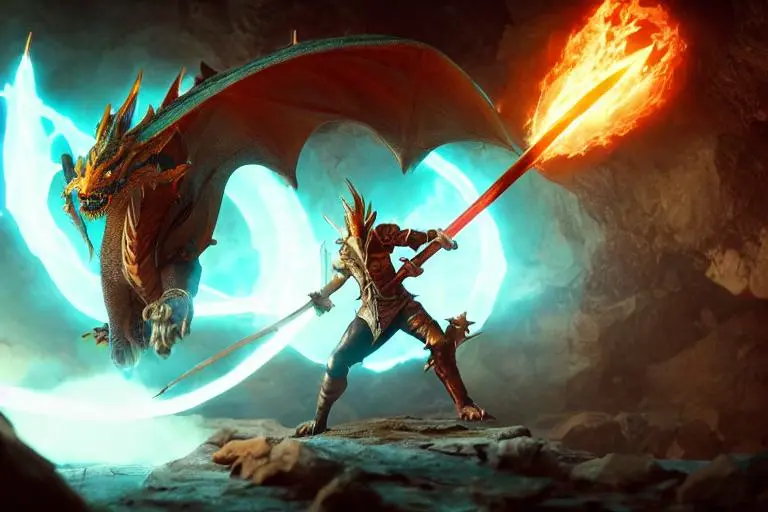
Greg Rutkowski’s original artwork “Castle Defence” (2018), versus a AI Stable Diffusion prompted image
Talking about digital fantasy art would be incomplete if we didn’t also include the new generation of artists working in the field of video games and animation. And you don’t even need to be a gamer to appreciate it.
Final Fantasy was Just the Beginning: Video Game Art Universes
Global digital culture raised video games to an art form in its own right, one which frequently dabbles in the fantastic. These fantastic artworks in Video Game Art are produced by entire teams of designers and artists, working on all details of the fantasy game universes. Although very popular games brought artists like Final Fantasy’s Tetsuya Nomura to stardom, indie games often bring us the most beautiful works of fantasy art.
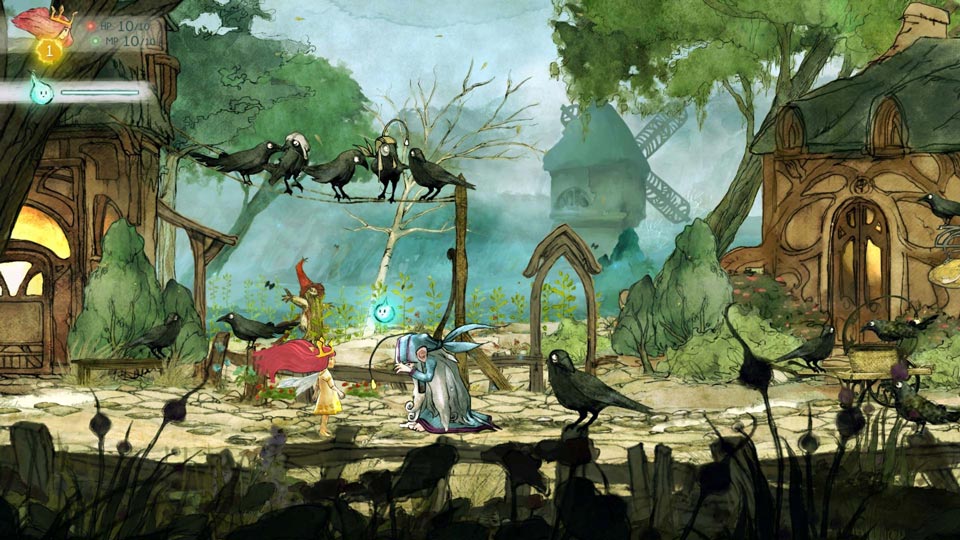
Screenshot from the video game “Child of Light” by Ubisoft (2014)
One such example is Child of Light, an adventure game inspired by fairy tales released in 2014 by Ubisoft. This 2D and 3D combined work is an artistic homage to early 1900s fantasy illustration art. “The Black Queen has stolen the Sun, the Moon and the Stars”, the narrative introduction says. “You are Aurora, and you must restore this once great kingdom.”
You have an active part in how the story unfolds.
Welcome to the world of Fantasy art, where the real and impossible combine, where we transcend our worlds and come back in stride.
—
- The Vindication of the Monster: From Tolkien to The Witcher - January 6, 2025
- AI Art is Here to Stay – Now What? - May 22, 2023
- Breaking the Chains: Women Conquering Fantasy Art World - March 6, 2023
